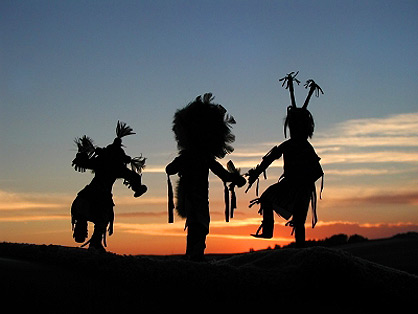The Indigenous Foundations Of America

In less than three weeks, many Americans will celebrate the Thanksgiving holiday: sitting at the dinner table with family and eating until the tryptophan-induced sleep kicks in.
Some will enjoy a football game or "Charlie Brown" reruns and others will hear for the umpteenth time the story of the "Pilgrims and the Indians."
While this legend has developed many versions, it is safe to say some of the details have dissolved. So what really happened at this celebratory feast?
One account says that, in 1621, the Pilgrims held a banquet to thank God for their survival despite the harsh conditions of their trip from Massachusetts to Plymouth. They shared this meal with the Native Americans who had helped them to survive.
However, as many of us have learned, American history is characterized by gruesome colonization. So while it all began as a peaceful endeavor, it was only 20 years before violence against the Native Americans ensued.
Another version of the Thanksgiving story tells that in 1641 the Pilgrims banded against the Native Americans by raiding their villages, raping women and murdering men. They celebrated their victory against the native people and that’s what characterized the ‘holiday’.
In either case, it’s clear that one of the most essential holidays to American culture was impacted by Native Americans. From peanuts and potatoes to vitamin C and democracy, indigenous populations have contributed to the foundation of America. Fittingly, November does not just mark Thanksgiving; it is also Native American Heritage Month. While the history is often associated with pillaging as well as progress, there are feats in more recent years that have also contributed to the nation.
Clyde Bellecourt, founder of the American Indian Movement led a rally earlier this month outside the Mall of America, according to a report from the Indian Country Today Media Network. The movement was in protest of the 'Redskins' team name that has gained popularity within the football world. The ‘R-word’ brought together hundreds of protestors to highlight the severity of the slur and to show respect for the American Indian heritage.
SEE ALSO: Washington Redskins: America's Modern-Day Smallpox Blanket
In Grand Rapids, Michigan, students from Grand Valley State University came together with community members to manicure the local Native American burial ground. Eugene Strong, who works to preserve American Indian burial sites and helped to organize the event commented, that by paying homage to Native Americans through gestures like this, participants are "helping the ancestors; you’re helping the culture and preventing the final act of genocide.”
Like the Indian Country Today Media Network, the National Museum of American Indians has also documented the history, accomplishments and efforts of the Native American community. As community affiliates across the globe continue to celebrate Native American culture, it's important that we don’t leave these activities behind this month.
Many of us have Native American ancestors. And while all of us have not traced our lineage or claimed membership with tribes, the heritage is still significant to our behavior and our identity. Even for those of us that aren't of American Indian descent, to not pay our resepects to Native American history and the contributions they have made to our nation is to completely dismiss the indigenous foundation of America.
Reach Contributor Ashley Nash here.



